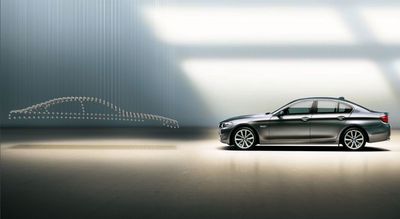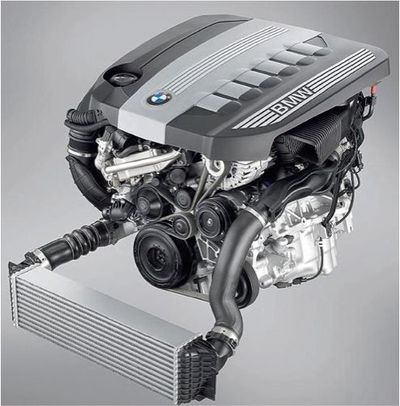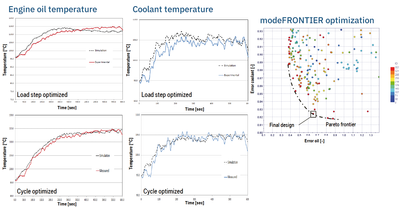Keeping it cool with modeFRONTIER


- Company: BMW
- ESTECO Software Solution: modeFRONTIER
- Benefits:Validate a reliable transient cooling system modelObtain a reduction in oil temperatureEnable automatic fine tuning of the parameters
The optimization platform helped the BMW team create a reliable transient cooling system model
When it comes to reducing fuel consumption, one effective strategy is to improve the performance of an engine’s transient cooling system. The Diesel Engine Development Department at BMW used modeFRONTIER to optimize engine parameters related to the cooling system and to support the validation steps for the newly updated thermal model, in this way determining an accurate framework for comparing and optimizing different cooling packages.
"The easy-to-build integration enabled faster identification of the best heat transfer coefficients."
Challenge
In order to identify better configurations for the transient cooling system of the six cylinder/225kW diesel engine, the team of BMW engineers developed the air side and coolant circuit model using Kuli, supported also by 3D-CFD simulations. To validate the model, measurements were taken of two different driving cycles and load step on the test bench. After comparing the coolant heat balance for oil and water circuits in the vehicle and on the test bench, results showed significant differences, even for very similar engine operating points. In particular, the wind speed impacting the crankcase, the oil pan and the cylinder head beside the actual thermal conditions under the vehicle hood are difficult to precisely determine on the test bench, affecting the reliability of related transient cooling simulations. To increase confidence in the reliability of such simulations, the engine model was refined to reduce measurement divergence observed during validation tests.

Solution
The coolant circuit and the air path models represented in the engine model included two main groups of key parameters requiring enhancement: five heat transfer coefficients and four heat capacities. modeFRONTIER allowed the engineers to set up an effective optimization workflow that was capable of automatically interacting with the Kuli engine model and detecting the optimal configuration for the nine parameters. Günther Pessl, Head of Simulation at BMW says that “the easy-to-build integration between the two software enabled faster identification of the best heat transfer coefficients and thermal inertia in the engine analyzed.” When transferring the test bench model to the real vehicle model, some parameters indicated fluctuations during the validation cycles, especially oil temperatures which showed the biggest deviation during the hill climb. “Thanks to the optimization loop performed on the hill climb cycle, the engine parameters were refined, resulting in a significant improvement in accuracy measured on the Miramas BMW test track” says Günther Pessl.
Benefits
modeFRONTIER helped the BMW team create a reliable transient cooling system model, compliant with new testing guidelines and accurate enough to be reused for comparing and optimizing different cooling packages. The software contributed to a significant reduction in oil temperature and coolant side model errors and improved related temperature trends. Additionally, the automation capabilities of modeFRONTIER together with its powerful optimization algorithms, enabled automatic fine tuning of the parameters that supported and shortened the model validation steps.


Two different validation cycles for engine parameter calibration.

The BMW Group – one of Germany’s largest industrial companies – is one of the most successful car and motorcycle manufacturers in the world. With BMW, MINI and Rolls-Royce, the BMW Group owns three of the strongest premium brands in the automobile industry. The vehicles it manufactures set the highest standards in terms of aesthetics, dynamics, technology and quality, borne out by the company’s leading position in engineering and innovation. www.bmw.com


